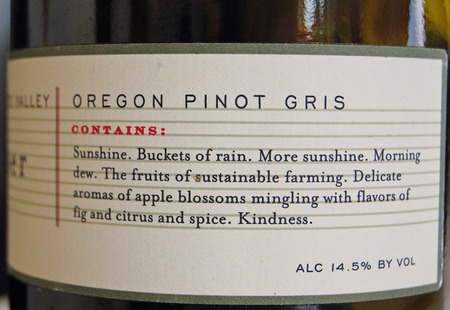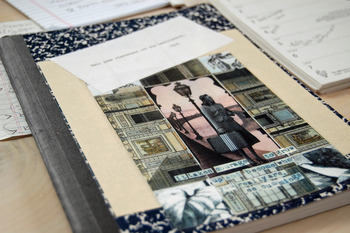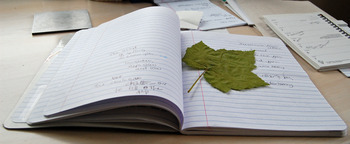Drew Myron's Blog, page 59
August 13, 2013
To those who go
 Denver International Airport
Denver International Airport
 Photo by Br. Phap Hai
Photo by Br. Phap Hai
Poetry lives in the everyday. Not in the book. Not on the page. Not even on the stage.
But in the everyday experience. In parks and playgrounds. On wine bottles and city sidewalks. And now, in the airport.
To those who go is a public art project by Ximena Labra now on display at Denver International Airport. Throughout the nation's largest airport, travelers will find poems and quotes about travel on walls, windows, restrooms and halls.
"As far as I know, there are four ways to travel," explains Labra. "In Space, in Time, in the Mind, and in one's own Self."
Labra explores the travel theme with a collection of quotes and poems culled from classic literature to contemporary experience. Thinkers, poets and writers featured include Emily Dickinson, Albert Einstein, Isaac Newton, Douglas Adams, Thich Nhat Hanh, and many more.
We're all travelers. And in this airport concourse, poetry is my carry-on.
August 6, 2013
Don't stare at the drapes
Want to know how to think, feel, write, live? Everyone's got an opinion. Books, blogs and bars are stuffed with advice from those in-the-know to those-in-the-search. Some sticks. Some stinks. These nuggets from Cheryl Strayed are keepers:
What advice do you have for beginning writers?
1.
Write a lot.
2.
Don't be in a hurry to publish.
3.
Find the work that moves you the most deeply and read it over and over again. I've had many great teachers, but the most valuable lessons I learned were from writers on the page.
4.
Be brave.
Write what’s true for you. Write what you think. What about what confuses you and compels you. Write about the crazy, hard, and beautiful. Write what scares you. Write what makes you laugh and write what makes you weep. Writing is risk and revelation. There’s no need to show up at the party if you’re only going to stand around with your hands in your pockets and stare at the drapes.
— Cheryl Strayed
author of Torch a novel; Wild, a memoir; Tiny Beautiful Things, advice on love and life
Now it's your turn. What do you know that the rest of us should know? Go ahead, spill it.
August 1, 2013
Thankful Thursday: Surprise!
What I found this week: a skirt that fits, jeans that don't, a postcard, a poem, the dinner you made, a stranger with a message, the book I forgot, old photos of a younger us, hope, a run without stops, anticipation, your smile.
It's Thankful Thursday, a weekly pause to express appreciation for people, places, things and more. What are you thankful for today?
July 28, 2013
Fast Five with Margaret Chula
I love that mad scribble . . .
and then, sliding different words
across my tongue until it finds
the perfect sound.

Because a few questions can offer endless insight, I'm happy to present Fast Five — interviews with great writers, and chances to win good books. (To win, simply post your name and contact info in the comments section. See details below).
 Margaret "Maggie" Chula has been writing and teaching haiku and Japanese poetic forms for over 30 years. She is the author of seven poetry collections, and her haiku have appeared on Itoen tea cans in Japan, on a construction site for the new transit line in Portland, and on billboards in Tokyo train stations. She frequently collaborates with artists, musicians, and photographers, and currently serves as president of the Tanka Society of America, and as poet laureate for Friends of Chamber Music in Portland, Oregon.
Margaret "Maggie" Chula has been writing and teaching haiku and Japanese poetic forms for over 30 years. She is the author of seven poetry collections, and her haiku have appeared on Itoen tea cans in Japan, on a construction site for the new transit line in Portland, and on billboards in Tokyo train stations. She frequently collaborates with artists, musicians, and photographers, and currently serves as president of the Tanka Society of America, and as poet laureate for Friends of Chamber Music in Portland, Oregon.
Your short form poetry has earned numerous awards and recognition. What is it about the short form that draws you?
My love affair with haiku and later with haibun and tanka began when I lived in Kyoto ("Tranquility and Peace Capital"). For 12 years, my husband and I lived in a traditional Japanese-style house. Built after World War II from low-quality materials, there was a thin line between outdoors and indoors. Every winter mice nested in the closet. In rainy season, centipedes scuttled across the walls. Summer brought moths doing their frantic dance inside paper lanterns. For a few weeks one autumn, a weasel made his nightly visit to the garbage can in the back hallway. Tanuki (raccoon dogs) and a red fox frolicked in our moss garden. Our back door opened onto a rice field where we observed the rice cycle: flooding the paddy, planting rice shoots, cutting the rice in autumn, hanging the sheaves on bamboo poles to dry, and the final winnowing. Even in winter the fallow fields had their own beauty, filling with snow like a scene from an old woodblock print.
This awareness of seasonal changes is very Japanese. It’s expressed in every aesthetic from tea ceremony to flower arrangement and, of course, in poetry. Honest, direct, and profound, haiku suited my lifestyle of simplicity—living so intimately with nature!
The university where I taught English and creative writing had an extensive collection of English-language poetry. At this avant-garde university, several Japanese professors at Seika had studied abroad and met beat poets like Alan Ginsberg and Gary Snyder (who both came to lecture while I was there). The library also had English translations of the great haiku masters: Basho, Buson, Issa, and Shiki. I read all of R.H. Blythe books, copying down my favorite haiku in a notebook. There is something about transferring poems to paper that makes them come alive and be a part of your own experience.
Eventually, I began to compose my own haiku. Even with my busy teaching schedule (12 classes a week), I designated one day a week as a writing day. Hopping on my 50cc motorbike, I’d head up to a temple in the mountains for inspiration. I especially liked the winter months when I could be alone (Japanese hate the cold). Sitting on tatami and drinking green tea while watching snow fall on the garden, I’d fill my notebook with haiku.
I wrote in seclusion for a couple of years until I was introduced to an American poet who had lived in Kyoto for 30 years. Edith Shiffert and I met regularly for lunch or coffee at a kissaten or at one of our houses to share both our lyrical poetry and haiku. Sometimes we’d go on an excursion and write haiku together. Edith is now 98 and still lives in Kyoto.
After all this background, I would simply say that, for me, a haiku is like a drop of dew containing a single moment of beauty, a reminder of the transiency of our lives. The longer five-line tanka reveal our deep connection to nature as we live our lives filled with desires, loss, love, and continual change. Haibun invite us to tell stories in prose, interspersed with haiku, which surprise us with the unexpected. After 33 years, these Japanese poetic forms continue to entice and intrigue me.
Some people say "first thought best thought." Others edit a piece into place. What is your writing process?
First, and most importantly, I try to be true to the experience. Haiku and tanka bloom from a moment of revelation. Whether it’s a spiritual awareness or just seeing something familiar in a new way, I jot down the words without judgment. Because haiku and tanka are so short, it’s easy to roll the words around in my head, say on a walk, and come up with a satisfying order. Over the years, I’ve become more alert to moments of synchronicity—both profound and humorous, such as
all at once
peony blossoms drop
clap of thunder
As haiku poets (or any poets for that matter), we need to be aware of the natural world—not only through observing it through a child’s eye, but by understanding the characteristics of flowers, birds, animals, etc. As Bashô said: Learn of the pine from the pine, learn of the bamboo from the bamboo. The enjoyment of this peony haiku is enhanced by knowing that, in Japan, it’s a rainy season flower. The peony’s delicate petals and fragrance are welcome in this month of heavy humidity and heat. All at once can mean both both suddenly and that peony petals fall at once, a characteristic of this flower. Both the petals falling and the thunder booming outside offer a moment of synchronicity. I actually laughed out loud when this happened: those delicate blossoms making such a loud noise when they tumbled onto my desk.
How much did I edit this one? Not much. Most likely, I took out a few articles or adjectives. In such a short form, every word must contribute to an image, mood, or action. The verb, especially, needs to be strong, both in sound and effect. Rearranging lines is essential in order to have that aha at the end. One great thing about haiku is that, by using a few well-chosen images, there is no need to explain or embellish.
What is your favorite poem in your latest book, Just This. Why?
The tanka in Just This express our endless states of longing (evoked by fragrance), loneliness caused by what’s been lost or never was, and memories passing away or forgotten. In the final section, as at the end of our lives, there comes an acceptance of things just as they are.
Just This is dedicated to my mother. Tanka about her final days thread throughout the five sections. Here are a few of my favorites:
Vicks VapoRub
the smell of Mother in winter
her hands rubbing
my small chest back and forth
deeper into my heart
winter afternoon
mother and I sort through
her jewelry box—
accepting baubles
just for their stories
the hollow stems
of summer daylilies
pull out with ease
Mother has fallen
and broken her femur
New Year’s Eve
my ninety-year-old mother
puts rollers in her hair
first red camellia
unfurls in the snow
and the one I often end my readings with
this morning
pale white light
shines through the window
it’s snowing again
and Mother is gone
Let’s talk about creative crossover. You’ve collaborated with an artist on a project about Japanese internment camps, have performed a one-woman show about Japanese poets, and currently serve as poet laureate of the Friends of Chamber Music (Portland, Oregon) for which you have written over 40 concert-inspired poems. How do these collaborations influence, enhance, or challenge your writing process?
I have to admit that I’ve become a collaboration junkie. Why limit yourself to one art form? Whether it’s a one-woman show combining costumes and Japanese music with poetry or writing poems to an artist’s work, or composing poems at a chamber music concert, this blending of the arts excites me.
Here’s what I wrote in my book What Remains: Japanese Americans in Internment Camps, a seven-year collaboration with quilt artist Cathy Erickson:
Collaboration is like a mirror that shows
each artist not just a mimicry of her work but reflects
a subtlety that she was not able to see before.
The words of the poem allow the quilt artist to look deeper
into the fabric of her creation to see the layers
that were not visible before. For the poet, words
take on texture, color, linear rhythm—a rhythm
of lines and shapes rather than iambs.
The sum of the piece becomes more than itself.
My approach to writing the poems to Cathy’s quilts was to follow the aesthetics of the Japanese style of painting called haiga. Hai is translated as poem (as in haiku) and ga is painting. Haiga, then, is a painting accompanied by a poem. The best-known example would be a hanging scroll of a sumi-e ink painting with a poem brushed vertically in calligraphy. What is the relationship between the painting and the poem? Rather than merely describing the artwork, the poem in a haiga shifts away from any obvious interpretation and invites the viewed to appreciate the visual image in a new way. A successful haiga creates a synergy where the interaction between the artwork and poem generates yet another level of interpretation and enjoyment. Often where one art form ends, another begins. There is a dialogue between the two forms. Both have a visual quality spoken in two different languages.
This is how I approach collaboration, whether working with a musician, a dancer, a photographer, or an artist.
You are an accomplished writer, poet and literary leader. What do you know now that you didn't know when you first started writing?
I didn’t know how this passion to write would continue to grow over the years — how it would become such an essential part of my life. I love the blessing of inspiration (even when it comes at 2am), that mad scribble of words and phrases, and then the process of moving lines around, finding the perfect adjective, sliding different words across my tongue until I find the perfect sounds.
When I moved to Portland in 1992, I didn’t realize that I would find such a supportive, nurturing poetry community. I have been sustained and enlivened by the members of my two poetry groups: the Pearl Poets and Word Sisters.
Bonus Question: I’m a word collector and urge others to keep a running list of favorite words. What are your favorite words?
I like words with interesting sounds, like peripatetic
the s’s: clouds, solace, shadow, caress, susurration
huddle
puce
jocular
and a new favorite borborygmos (loud rumbling, gurgling, and tinkling noises heard in intestinal activity).
To win a signed copy of Just This by Margaret Chula, add your name and contact info in the comments section below. Feeling shy? Email me, with Just This in the subject line: dcm@drewmyron.com
Enter by August 15, 2013. A winner will be chosen at random and announced on August 16, 2013.
Feeling inspired? Share your own short form poem with us.
July 25, 2013
How is a writer like a fish?
Try this: Read the following advice, replacing each Pisces with Writer. Does this ring true for you?
 It may seem counterintuitive, but the best thing Pisces [a Writer] can do to develop his or her sixth sense is build up layers of protection that will serve as a strong psychic defense. Pisces is already so sensitive and open to ethereal information that what is needed is a filtering system that will limit the amount of input Pisces absorbs and processes . . .
It may seem counterintuitive, but the best thing Pisces [a Writer] can do to develop his or her sixth sense is build up layers of protection that will serve as a strong psychic defense. Pisces is already so sensitive and open to ethereal information that what is needed is a filtering system that will limit the amount of input Pisces absorbs and processes . . .
The open awareness and emotional connection that Pisces radiates also makes Pisces highly impressionable. In short, Pisces picks up on people's karma and takes it on.
Psychic protection can be established through mindfulness, though it helps to create a ritual that will increase attention to this matter. One such ritual is to wear a talisman for protection. Imagine that this talisman radiates a bubble of spiritual energy around Pisces that is sealed with a membrane allowing only the best and highest energies to permeate Pisces' realm."
As a writer, what's your psychic protection? Do you repeat a mantra or carry a charm?
Writers tend to be wonderfully tuned in. We easily assess the mood of others. This sort of empathy serves as both blessing and curse. Because we absorb the feelings of others, we're unusually equipped with an intuitive ability to create believable characters and situations. But this can also leave us emotionally worn out and frazzled. To thrive we need to develop ways to balance acute awareness with healthy self-protection.
How do you do it?
July 20, 2013
Thankful Thursday: Weekend Edition
 Sometimes gratitude feels too specific, too personal, to share. Other days thankfulness seems too sweeping to express. In the margin between exactly this and something like that, I arrive here.
Sometimes gratitude feels too specific, too personal, to share. Other days thankfulness seems too sweeping to express. In the margin between exactly this and something like that, I arrive here.
Gratitude has a rhythm. It catches and continues. This week I am trying to catch the beat, holding to each note so that I might swing to the next. Repetition helps:
• I spent the week in Seashore Family Literacy's Summer Writing Adventure Camp, leading 9 children and 1 teen in explorations designed to inspire poems, stories, songs, and more. I am thankful for patience, willing, and words.
• As the rest of the world swelters in summer heat, the Oregon Coast stays at a steadfast 60 degrees with a crisp ocean wind. On a field trip this week, the temp dived. By the time we arrived at our (outdoor) walking adventure, the youngsters were far from home, damp, chilled and teetering on tears. I am deeply thankful for hot chocolate, and the refuge of the Pig 'n Pancake.
• Poetry is everywhere, when you're looking. Some of the most poetic lines this week were not written in journals, but spoken in casual conversation. Write that down, I urged, again and again. But the moment moves quickly and we sometimes don't recognize the value of our everyday observations. Thanks to the kids, my ears were tuned to hear.
Heard
lines of conversation from the young writers
It’s the circle of life.
Everything on earth is part of the circle.
How do you blow a bubble?
How tall am I to the tree?
We are waiting.
We are at a crossroads of nature,
an Eden of petals.
Don’t eat the twinberry!
This is a sacred arch.
I have too many words.
The bridge is wheezing.
I hear the zoop zoop zap of life.
This is a sweet exotic treat.
How do you spell happiness?
- edited/arranged by Drew Myron
What are you thankful for today?
It's Thankful Thursday, a weekly pause to appreciate people, places, and things in our lives. Gratitude multiplies with effort and desire. The more we are thankful, the more we recognize the richness of our daily lives — and the more we are thankful.
July 15, 2013
Wish I'd Written That
I don't just drink wine, I savor the label and brighten at the writer who deftly combines taste and wit with a splash of verve.
This label is from Sokol Blosser, my favorite Oregon winery (this pinot gris is available at the winery, and at The Wine Place in Yachats, Oregon).
For another wonderfully poetic label, see Wine Words (a nod to my other favorite Oregon winery, King Estate, and their "next" label).
Surely, literary labels aren't limited to Oregon. What's your favorite find?
July 11, 2013
Thankful Thursday: Once More?
For days I basked in the fabulousness of my weekend — a gift of new shoes, blueberries chest high and ripe, warm summer sun, a long jog, new friends. All of it so delicious.
And then Monday arrived, and with it the holiday hangover — you know it, right? — in which the zest for life circles the drain of ordinary routine. On Tuesday, the grit of irritation was building a fortress of annoyance. By Wednesday I was a slow burn of foul fumes: Can't anyone do anything right? Do I have to do everything myself? Does nothing ever change? blah blah blech. (Yes, I've been a delight to be around, thanks for asking.)
This morning I was not a bit thankful for the wonderful weekend that now seemed distant and impossible. Thankful Thursday? yeah, right.
And then I read my horoscope:
You've let go of minor grudges and resentments before, and now you're in the same place all over again. Should you forgive one more time? No. Forgive a thousand more times.
Wham! Well, yes, of course. Because this is how gratitude works, it sneaks up to humble the boastful and elevate the chagrined. Thank you, Thankful Thursday. Your mystery moves me.
It's Thankful Thursday, a weekly pause to appreciate the people, places, things (and horoscopes) in our lives. Joy contracts and expands in proportion to our gratitude. What makes your world expand?
July 9, 2013
Three Good Books
Sometimes the world is bursting with books, and I can't read fast enough. At other times, the world is full of books but nothing sticks.
I'm drawn to good writing, of course, along with engaging characters and story. But it takes more, doesn't it, to keep us on the page and eager. It's not just the book, it's what the reader brings to the book — a mysterious mix of timing, willing and luck.
Fortunately, I'm on a winning streak, absorbed and intrigued with nearly every novel I read. Here, a few recent favorites:
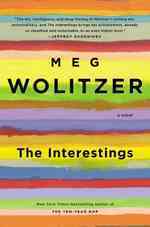 The Interestings
The Interestings
by Meg Wolitzer
Perceptive is the key word. From the New York Times to O magazine, nearly every review notes Wolitizer's keen ability to write characters with depth and empathy. This sweeping novel, says the Times, is "acutely perceptive about the feelings and motivations of its characters." It's no simple story, either. In her ninth novel, Wolitizer follows a group of summer camp friends far into adulthood for a complex story of friendship that is expansive, engaging, and at every turn rings true.
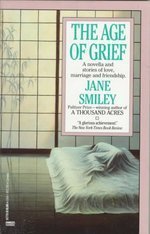 The Age of Grief
The Age of Grief
by Jane Smiley
It's easy to dismiss a collection of short stories. Just as you get comfy it seems the story is over and another begins. But don't skip this one! In this slim volume, Smiley (author of the Pulitzer Prize-winning novel, A Thousand Acres) demonstrates her powerful skill in rendering character and tone with deft economy. The title story (a long short story, or novella) is the keeper of the pack — it's a wise, moving, and at times funny story of a marriage about to break.
''I am thirty-five years old,'' says the story's narrator, ''and it seems to me that I have arrived at the age of grief. Others arrive there sooner. Almost no one arrives much later. I don't think it is years themselves, or the disintegration of the body. Most of our bodies are better taken care of and better-looking than ever. What it is, is what we know, now that in spite of ourselves we have stopped to think about it. It is not only that we know that love ends, children are stolen, parents die feeling that their lives have been meaningless. It is not only that, by this time, a lot of acquaintances and friends have died and all the others are getting ready to sooner or later. It is more that the barriers between the circumstances of oneself and of the rest of the world have broken down, after all — after all that schooling, all that care.''
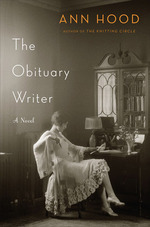 The Obituary Writer
The Obituary Writer
by Ann Hood
“When someone you love dies, after some time, no one listens anymore. I listened.”
In a story both fluid and empathetic, the lives of two women — one in a loveless 1960s marriage, and the other in the early 1900s grieving the end of an affair — are juxtaposed in a novel that examines the expectations of marriage and love. With The Obituary Writer, Hood, the author of 15 books (short story, memoir, novels) combines fluid prose with touches of literary suspense. The resulting novel is a sophisticated, accomplished observation of love and endurance.
Let's talk! What book has you hooked?
July 7, 2013
What's in your Journal?
What sort of diary should I like mine to be?
Something loose-knit and yet not slovenly, so elastic that it will embrace anything, solemn, slight or beautiful, that comes into my mind. I should like it to resemble some deep old desk or capacious hold-all, in which one flings a mass of odds and ends without looking them through.
I should like to come back, after a year or two, and find that the collection had sorted itself and refined itself and coalesced, as such deposits so mysteriously do, into a mould, transparent enough to reflect the light of our life, and yet steady, tranquil compounds with the aloofness of a work of art.
The main requisite, I think, on reading my old volumes, is not to play the part of a censor, but to write as the mood comes or of anything whatever; since I was curious to find how I went for things put in haphazard, and found the significance to lie where I never saw it at the time.
— Virginia Woolf
from A Writer's Diary
edited by her husband, Leonard Woolf



